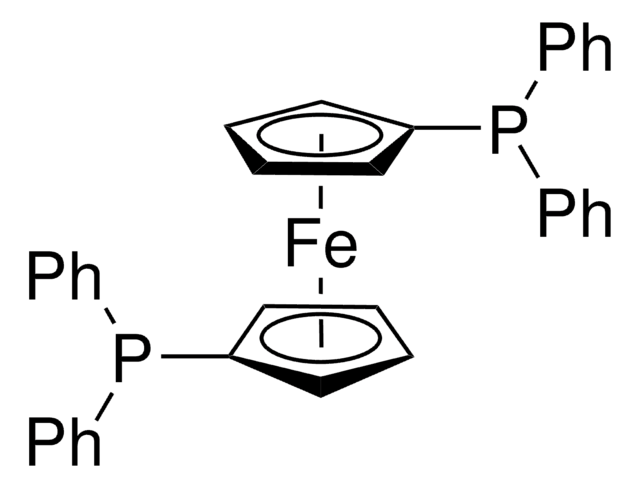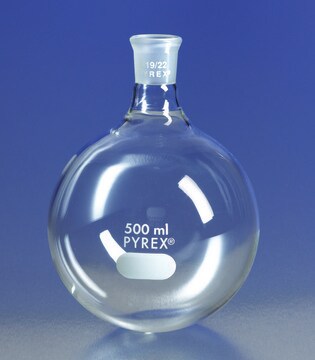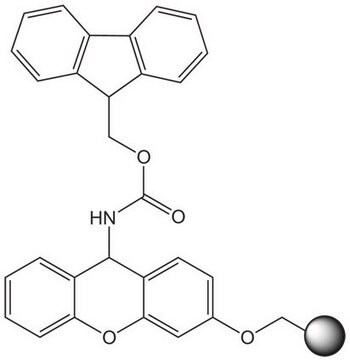936669
DPPF ChemBeads

Synonym(s):
DPPF, 1,1′-Bis(diphenylphosphino)ferrocene ChemBeads, 1,1′-Ferrocenediyl-bis(diphenylphosphine) ChemBeads, 1,1′-Ferrocenediyl-bis(diphenylphosphine), dppf
About This Item
Recommended Products
form
solid
Quality Level
composition
loading, 4-6 wt. %
mp
181-182 °C (dec.) (lit.)
SMILES string
[Fe].[CH]1[CH][CH][C]([CH]1)P(c2ccccc2)c3ccccc3.[CH]4[CH][CH][C]([CH]4)P(c5ccccc5)c6ccccc6
InChI
1S/2C17H14P.Fe/c2*1-3-9-15(10-4-1)18(17-13-7-8-14-17)16-11-5-2-6-12-16;/h2*1-14H;
InChI key
HPXNTHKXCYMIJL-UHFFFAOYSA-N
Looking for similar products? Visit Product Comparison Guide
General description
Application
- DPPF has been used as a ligand in:
- The ruthenium catalyzed N-alkylation of amines and sulfonamides using borrowing hydrogen methodology.[1] (19191700)
- The cooperative Cu/Pd catalyzed borylallenylation of trifluoromethyl-1,3-enynes to generate conjugated bisallenes.[2] (36321461)
- The cooperative Cu/Pd catlyzed borocarbonylation of ethylene.[3] (36226440)
- The gold catalyzed synthesis of 2-phosphoryl indolin-3-ones.[4] (35815915)
- The iron-catalyzed vinylzincation of terminal alkynes.[5] (34935372) ChemBeads are chemical coated glass beads. ChemBeads offer improved flowability and chemical uniformity perfect for automated solid dispensing and high-throughput experimentation. The method of creating ChemBeads uses no other chemicals or surfactants allowing the user to accurately dispense sub-milligram amounts of chemical.
- For general uses, product is also available in powdered form (177261)
related product
Storage Class
11 - Combustible Solids
wgk_germany
WGK 3
flash_point_f
Not applicable
flash_point_c
Not applicable
Choose from one of the most recent versions:
Certificates of Analysis (COA)
Sorry, we don't have COAs for this product available online at this time.
If you need assistance, please contact Customer Support.
Already Own This Product?
Find documentation for the products that you have recently purchased in the Document Library.
Our team of scientists has experience in all areas of research including Life Science, Material Science, Chemical Synthesis, Chromatography, Analytical and many others.
Contact Technical Service



![[1,1′-Bis(diphenylphosphino)ferrocene]dichloropalladium(II)](/deepweb/assets/sigmaaldrich/product/structures/130/734/8846aa26-1858-458a-998d-8c306c13bf0f/640/8846aa26-1858-458a-998d-8c306c13bf0f.png)




